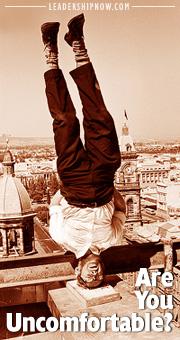By Willow Dea, Therapy Resource
“Comfort is not the objective in a visionary company. Indeed, visionary companies install powerful mechanisms to create /dis/comfort — to obliterate complacency — and thereby stimulate change and improvement /before/ the external world demands it.” -James C. Collins
We take tremendous care to achieve our mission every day: To dignify and transform long-term care in the eyes of the world. We do that by enacting a pledge to our core values, which foster a culture of integrity and compassion for our patients and their families.
These commitments ask everything of us. They require each of us to explore a profound, and continuously evolving understanding of leadership. Every Ensign affiliate is a leader; it’s part of the agreement we made when we accepted our respective positions. As partners in this endeavor, we are offered an opportunity to be part of something much greater than ourselves. It’s in this context that I find myself wondering how to be a better partner to each of you and a better leader, especially in practical terms. What does it actually look like, as a set of behaviors and outcomes, to be a leader?
Good to Great[1] revealed the traits of great leaders, and we’ve benefited from learning from these examples. We know that taking responsibility, being humble, getting the right people on the bus, being able to ask for help and leading with passion are essential characteristics and skills for building great organizations and realizing our mission.
Yet the question of how to develop those traits remains somewhat elusive for me, even with such clear stories. In practice, this means we get to cultivate new habits and practice new behaviors. To do that, we need to get comfortable with the uncomfortable. Easier said than done, right? Where do we start? It’s been said that habits are more powerful than fear and that “life begins at the edge of your comfort zone.”
Fortunately, many people are asking similar questions, in every industry sector. Extensive research has been done to help us grapple with these central concerns and effectively answer them. Leadership Agility is based on the rigorously researched developmental framework presented in the award-winning book Leadership Agility: Five Levels of Mastery. The three dimensions of this framework are summarized below.
The Developmental Model[2]
Agility Levels
The first aspect is a description of the “leadership agility levels” that came out of the research. As managers develop, they grow through stages or levels of agility that can be clearly defined and measured. Teams and leadership cultures have the potential to evolve through parallel levels of agility. The three levels of leadership agility most relevant to the vast majority of today’s organizations are:
- Expert: Managers who operate at this level of agility use their technical and functional expertise to make tactical organizational improvements, supervise teams, identify and solve key problems, and sell their solutions to others. Research indicates that approximately 45 percent of today’s managers operate at this level of agility.
- Achiever: Managers who function at this level of agility use their managerial skills to set clear organizational objectives, lead strategic change, motivate and orchestrate team performance, and engage in challenging cross-boundary conversations. About 35 percent of today’s managers operate at this level of agility.
- Catalyst: Those rare managers who have developed this level of agility are visionaries who can lead transformative change, develop high participation teams, and collaborate with others to develop creative, high-leverage solutions to tough organizational issues. About 10 percent of today’s managers operate at this agility level.
As change accelerates and the world continues to become more complex, the need increases for more Experts to become Achievers and for more Achievers to develop the capacities and skills needed to operate at the Catalyst level. In this increasingly turbulent environment, teams and leadership cultures are challenged to undergo parallel developments.
Action Arenas
As leaders develop through the levels of agility described above, their capacity for taking leadership in all three key leadership arenas expands and becomes more effective:
- Leading organizational change
- Improving team performance
- Engaging in pivotal conversations
The Agility Compass: Four Types of Agility
Joiner and Joseph’s research found that agile leaders employ four types of agility, which work together to increase the effectiveness of leadership initiatives in each of the three arenas. The four types of agility are briefly summarized below:
- Context-settingagility determines how leaders scan their environment, select key initiatives, then scope and set objectives for these initiatives
- Stakeholderagility determines how leaders identify and understand key stakeholders, as well as their ability to create greater alignment with different stakeholder groups
- Creativeagility determines a leader’s ability to identify the key problems an initiative needs to solve, get to the underlying issues, and develop creative solutions that work for multiple stakeholders
- Self-leadershipagility determines how proactive leaders are in experimenting with new leadership behaviors and in learning from their experience
If your curiosity is sparked and you’d like to learn how to reach your next level, reach out to Willow Dea at WDea@EnsignServices.net to take a self-assessment. It takes about 10 minutes, and you’ll leave with a clear understanding of exactly what you can practice to become the leader you aspire to be.
Remember, “The job isn’t to catch up to the status quo; the job is to invent the status quo.” — Seth Godin
[1] Good to Great, James C. Collins, Harper Business; 1st edition (October 16, 2001)
[2] Leadership Agility, William B. Joiner and Stephen A. Josephs, Jossey-Bass; 1 edition (October 20, 2006)
